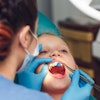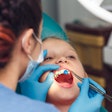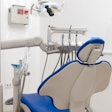
Social networks may positively influence oral health outcomes among women living in public housing, according to a study published July 27 in JDR Clinical & Translational Research.
The study findings fill a knowledge gap, wrote a team led by Brenda Heaton, PhD, of Boston University in Massachusetts.
"Research into the influence and role of social networks on oral health outcomes has been limited," it noted. "[Our] study aimed to demonstrate … the influence of social networks on oral health outcomes among women in who live in public housing in Boston, Massachusetts."
The research included both individual- and network-level data taken from a cross-sectional survey of adult female residents of two public housing developments in Boston. The survey consisted of question regarding sociodemographic characteristics, oral and general health status, and health-related behaviors; using this information, the team calculated network-level variables for each participant, including the proportion of social networks with certain characteristics or attributes, it wrote in a statement released by the International Association for Dental, Oral, and Craniofacial Research.
The investigators found that social networks improved some patient oral health outcomes, such as decreasing the odds of a survey participant reporting no dental care visit in the past year as social contact via networks increased.
"Interventions aimed at reducing the poor oral health burden [on underserved] population groups may benefit from integrating information on social networks, including tailoring intervention delivery and/or messaging to account for the potential influence of social networks," the researchers wrote.
The study findings could be useful for developing policy, the team concluded.
"This work may be beneficial to those developing policy solutions and interventions aimed at reducing the burden of poor oral health outcomes in socioeconomically disadvantaged populations, such as women who reside in public housing developments," it wrote. "The potential for leveraging social networks to seed messaging about oral health, for example, may enhance efforts to reduce oral health disparities."



















